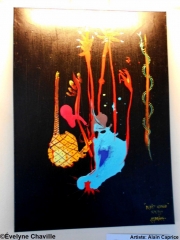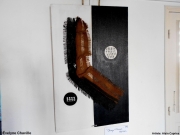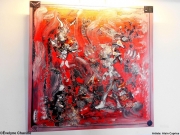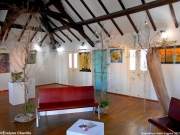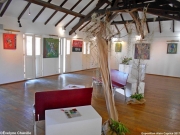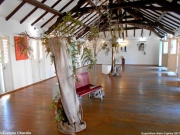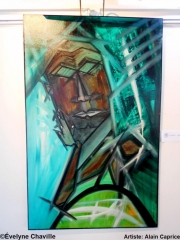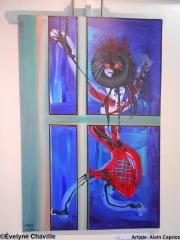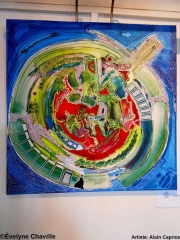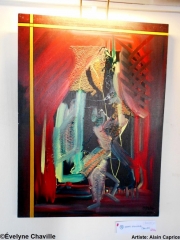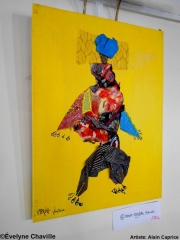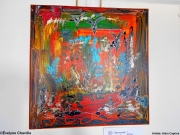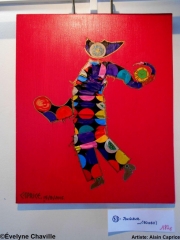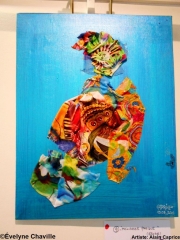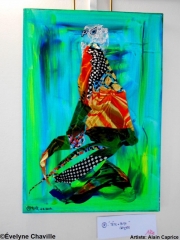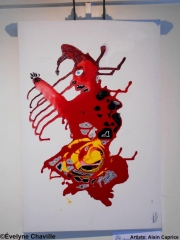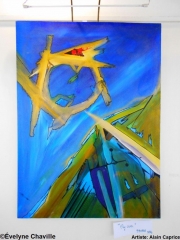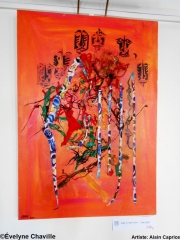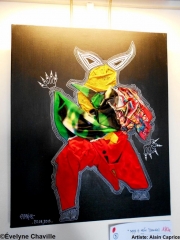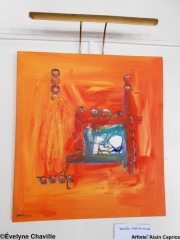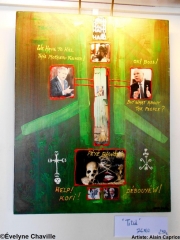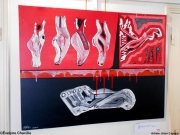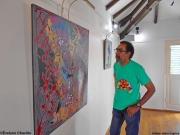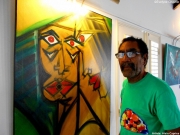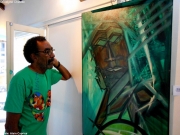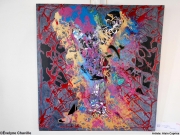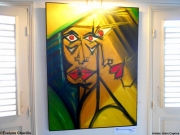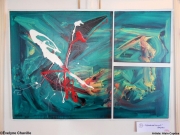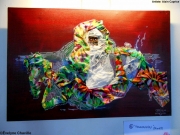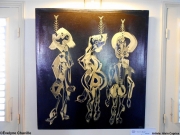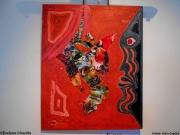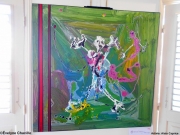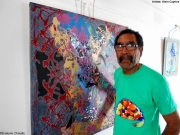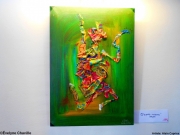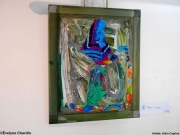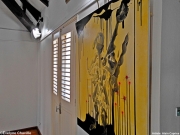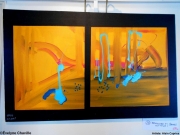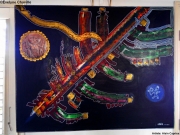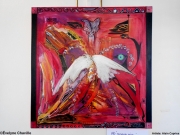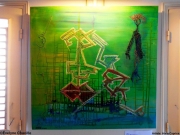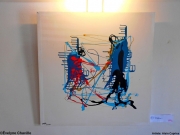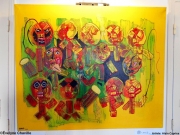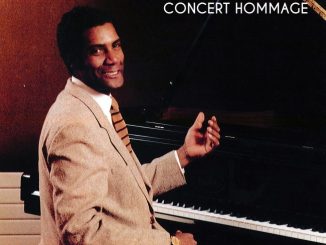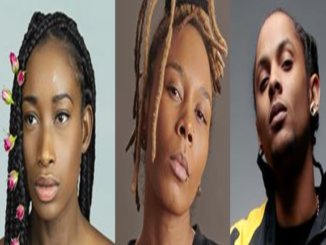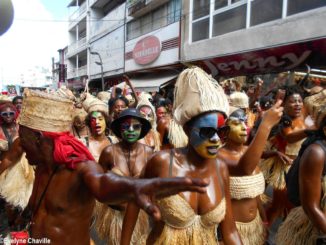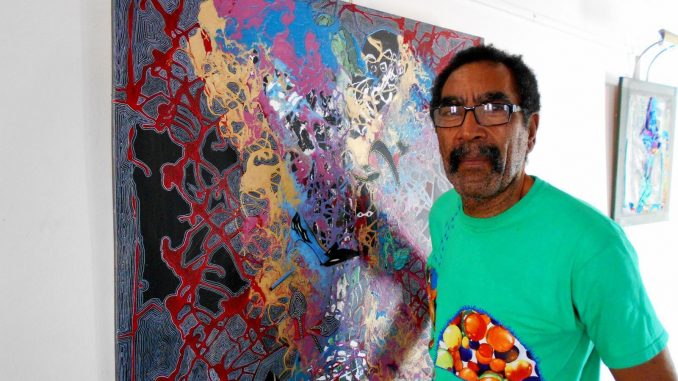
Born in 1944 in Fort-de-France (Martinique) of a mother from Sainte-Marie and a father from Le Carbet, Alain Phoébé (this is his real middle name which means “brilliant” in ancient Greek) Caprice has been living in Guadeloupe for very many years. Painting, photography and poetry are the three modes of expression of this committed artist. Having already made countless pictorial works from a very young age and dozens of exhibitions in Martinique, Guadeloupe, France and the United States, Alain Caprice decided this time to select about forty of paintings of the last seventeen years and to propose them to the public through a new exhibition entitled “Partage” (Sharing) from December 11 to 30 at the Centre Culturel Rémi Nainsouta in Pointe-à-Pitre.
The plastic artist agreed to share some of his thoughts with readers of KARICULTURE.NET.
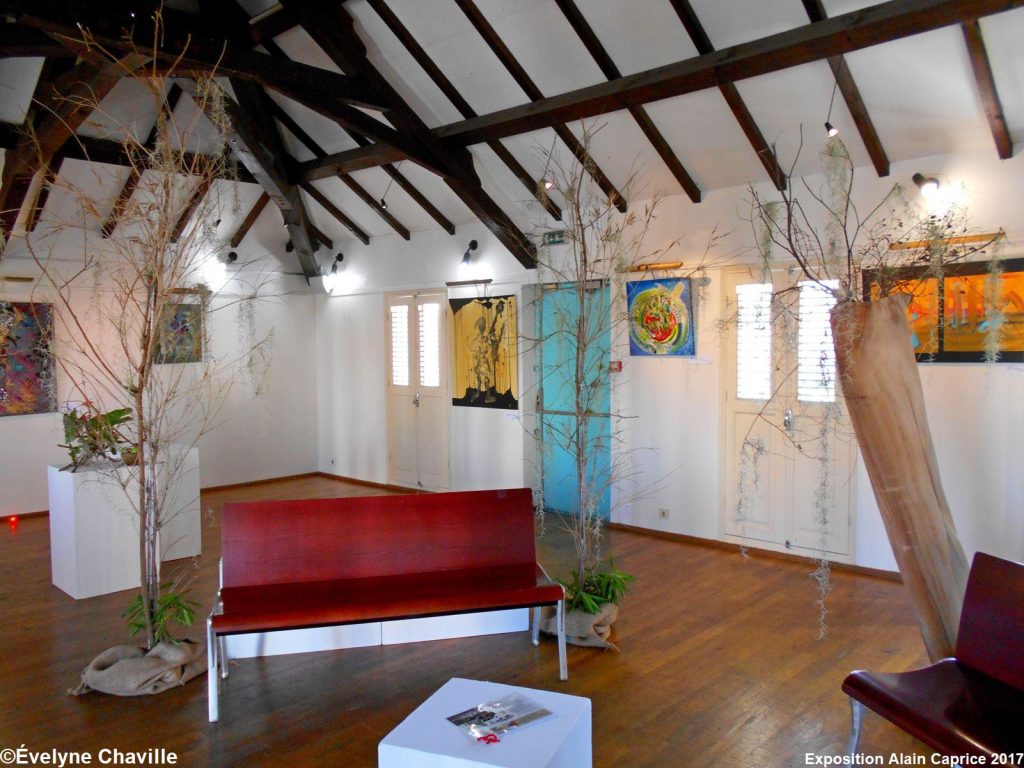
The paintings exhibited at the Centre Culturel Rémi Nainsouta in Pointe-à-Pitre are dated from 2000 to 2017. But, they represent only a very small part of the numerous works produced by Alain Phoébé Caprice during his long career as an artist-painter. “I cannot count the number of paintings that I have already painted (…), I have been painting since I was very young. Since 1972, I have never stopped offering paintings every year in Martinique and Guadeloupe in personal and collective exhibitions”, he said.
During this selected period, the last seventeen years, Alain Caprice shown various facets of himself to the public. His fans who follow his work since his first exhibitions, including that with the Guadeloupean painter Lucien Léogane in 1995, will have no difficulty reviewing the progress made by the plastic artist. The art pictorial lovers who still do not know his work can also discover his evolution.
This exhibition called “Partage” (Sharing) presents itself as a kind of walk through time between the different techniques and colors as well as the various materials used by the artist to translate on the canvas his inspirations of the moment. Everything is done to make pleasant the visit of the approximately forty exhibited works in particular by the decor of the room made with plants and trees (coconut tree etc.) in addition to the candies put down here and there. It was his wife’s nice idea, Isabelle, who play a major role in organizing this exhibition. “She is the key”, said the artist.
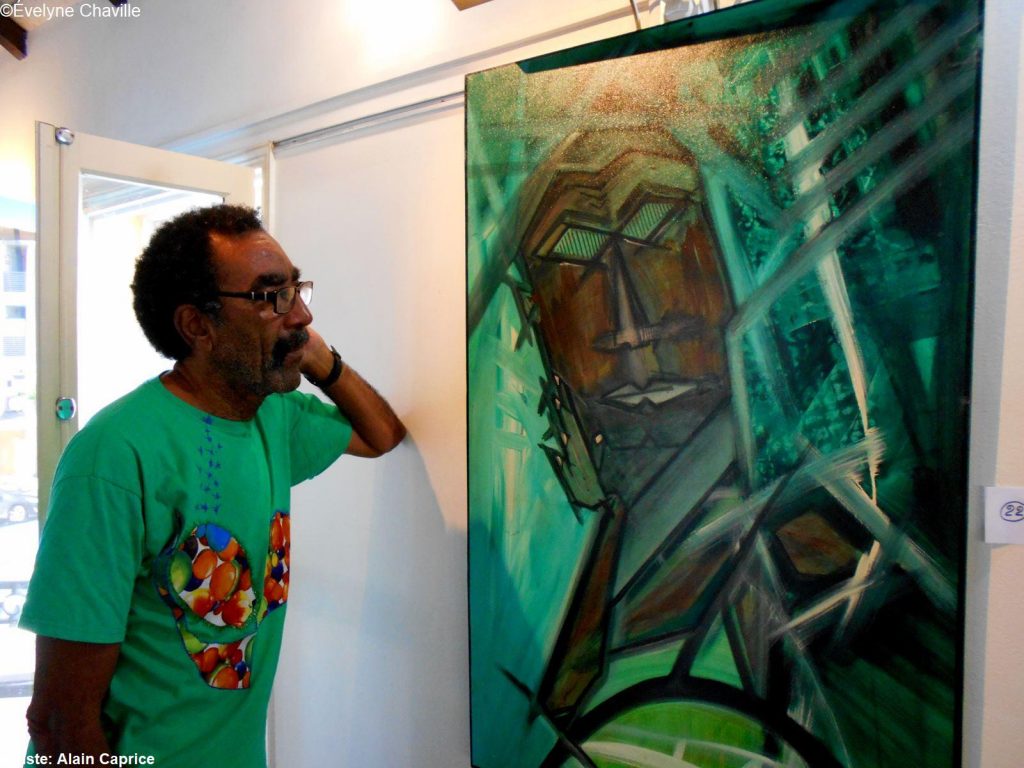
Being in osmosis with the public
Although Alain Caprice always shared with the public in dozens of exhibitions he organized or in which he participated, he finds it important to always highlight the word “Sharing” (Partage). “My aim with this exhibition is to give the public keys to access my world, to touch invisible worlds. These keys can transport us to see what we do not want to see, to see in ourselves, it’s a kind of mirror. When the artist shares, he is in a kind of osmosis with the public”, he said
Alain Caprice does not hesitate to go around the room and stop in front of each painting to comment but especially to listen to what the visitor thinks and feels when he look at them. On several of them we can see these fine, continuous lines that look like the wood grains, a sort of trademark of the artist. “It’s a work of patience”, he said. The brightly-colored fabric is one of the materials used on several works. “I asked my daughter N’Djaména, who is a stylist, to give me some drops of beautiful fabric scraps, I tried to see what that could give on the canvas and I noticed that was good when I represented, for example, characters”, he said. The themes are very disparate : women, carnival, dance, politics, history, Africa, circus, war, the Amazon, shoe, dream, chlordecone, religion, the Caribbean etc. “I never paint to say nothing, I always have something important to express. Each of my exhibitions has a theme, a message. Combining artistic creativity and popular discourse is never easy, it is necessary to find the appropriate words”, he said.
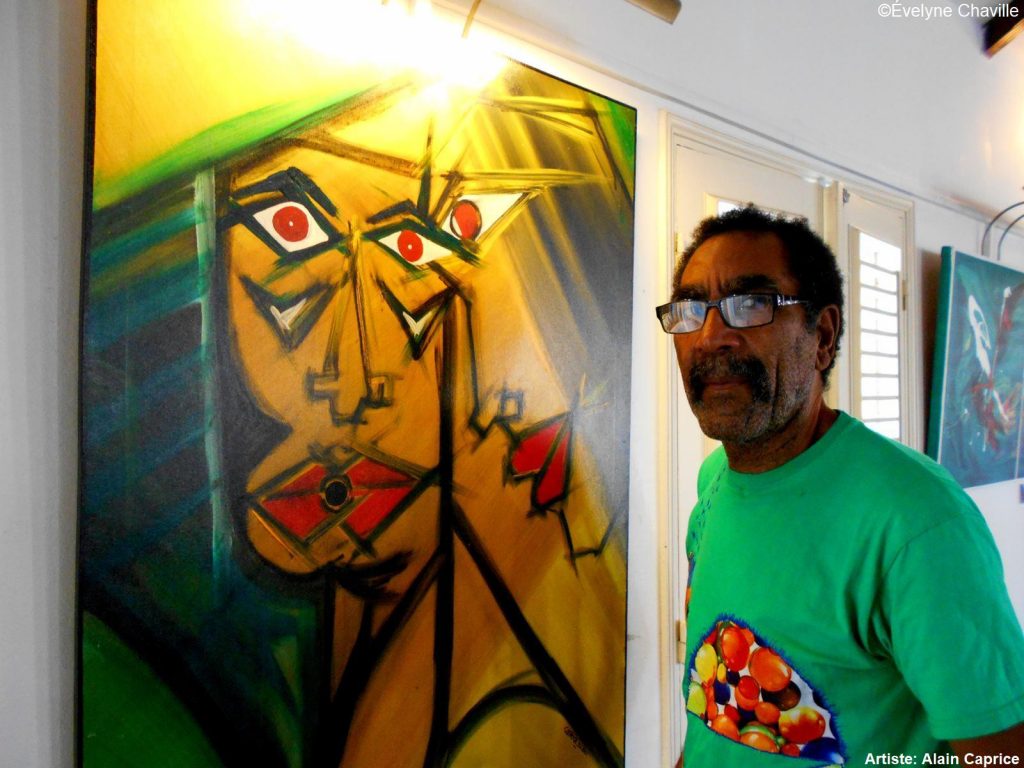
A strong creative capacity
Alain Caprice’s passion for painting began when he discovered, as a teenager, the works of the German drawer, engraver and painter Albrecht Dürer (1471-1528). “I really liked his drawings, the gargoyles for example. I began to imitate him gradually, to create works like Dürer but dealing with situations in the West Indies. During these years at Lycée Schoelcher in Martinique, we were a small group of three pupils – Alexandre Cadet-Petit, Alex Burke and I – and we organized the contest for the best artist in the class. In fact, it was Alexandre who had the idea to make this competition during the schoolwork to find the best picture of the class. As we were the best three, the competition was between us. The best won some pain au chocolat which he shared with all classmates”, he said with a laugh.
Then, the three friends who had a strong creative capacity decided to compete in drawing. “It was I who proposed that we make drawings, and this decision was not related to the price of the material – the paint tubes were not very expensive in my opinion, at that time – but I thought that we were still not strong enough to be painters”, he said with the same laugh produced by his childhood memories.
In addition, Alain Caprice was also interested in the famous Cuban painter Wifrido Lam (1902-1982) and his cubist and surrealist influences. Some of the paintings of this exhibition – such as “Sueño” and “Murmure indécent” – are inspired by Cubism.
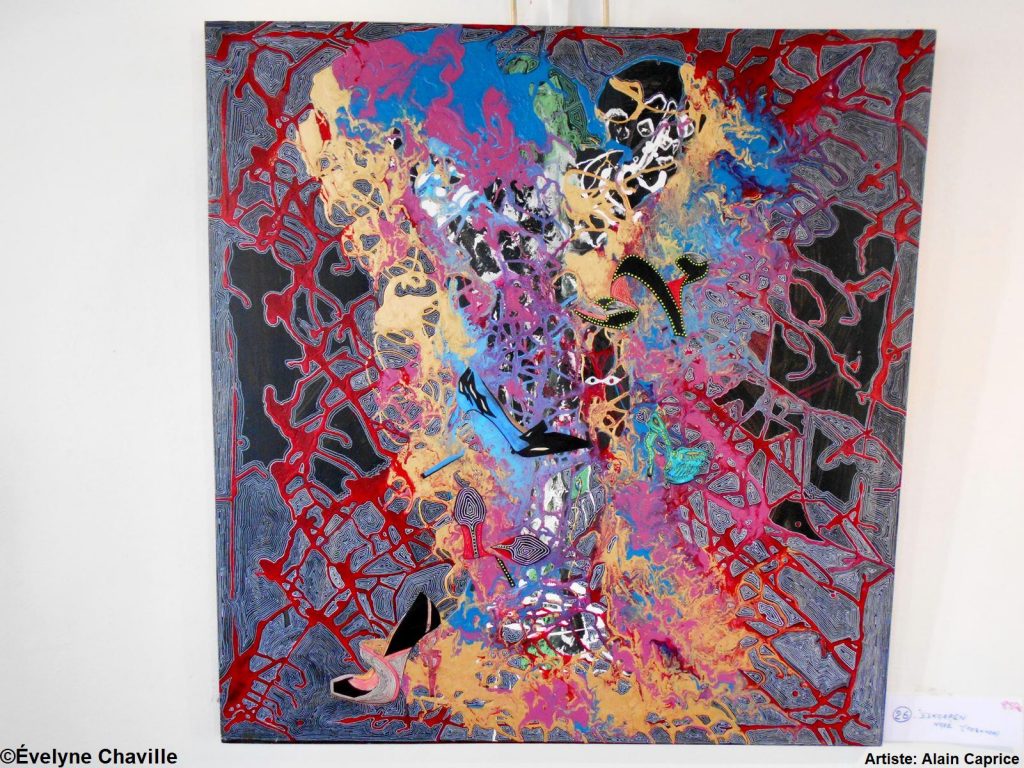
“Prix Révélateur de Talents” in 2015 at Art Freedom
Today, the former policeman now retired look at things with hindsight. “I think I was a good police officer. I liked the street, the ghetto. The little punks called me “Fly” because of the movie “Super Fly” which was screened in cinemas. These boys had serious discussions. I was one of those who thought that dialogue with them, even it was not easy, could be a good way to get them out of delinquency (…) The flow of hard drug – in particular “crack” – in the 1990s caused a devastation in Guadeloupe”, said Alain Caprice. He is happy to have encouraged some offenders to be interested in art : “They came to see my exhibitions, they asked questions, we discussed”, he said.
Today, the one who spent most of his life in Guadeloupe wants people from Guadeloupe and Martinique become more conscious of what they are and their capacities. “When I hear about a great foreign artist, I answer that we also have great artists in Guadeloupe and Martinique and that we should also promote them. When I hear about a foreign style, I answer that we also have our style and we also have to be aware of it and enhance it”, he said. But Alain Caprice does not prefer isolationism.
In addition to his two favorite islands, the artist already exhibited his works at the Brooklyn Museum of Arts in New York (United States) and the Espace Pierre Cardin in Paris (France) during the exhibition “Art Freedom” organized by the Couleur Pays association, where he received the “Prix Révélateur de Talents” in 2015, a well-deserved award even if Alain Caprice’s talent has been known for decades…
For several years now, the Centre Culturel Rémi Nainsouta in Pointe-à-Pitre (Guadeloupe) became the artist’s favorite room ; before, he presented there his works at the beginning and at the end of every year. He would like to show his work on the other islands in the Caribbean but “it’s not easy, you need to have the right contacts”, he said.

